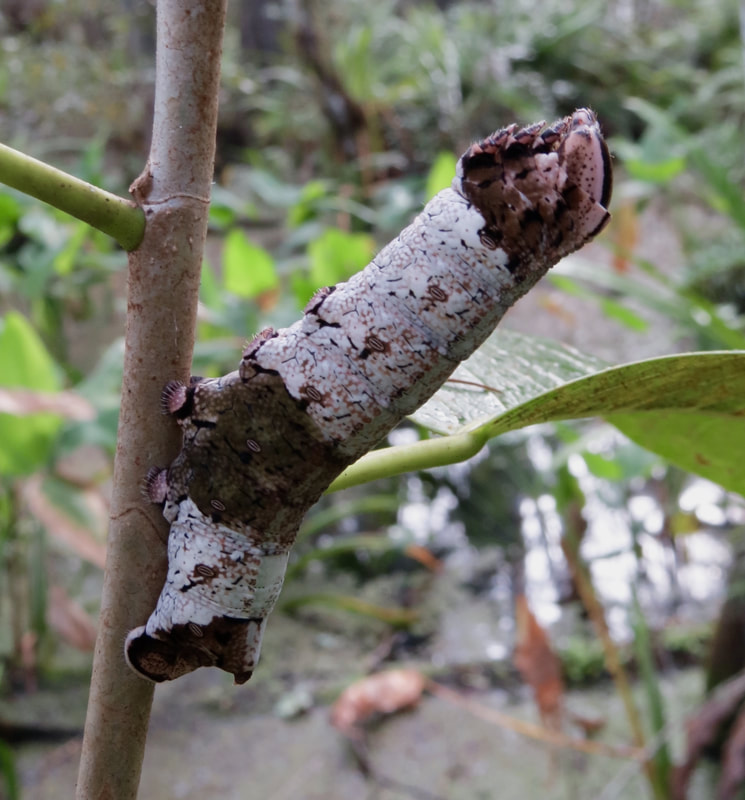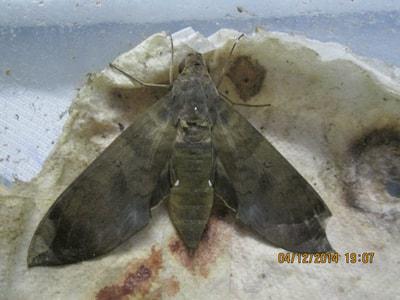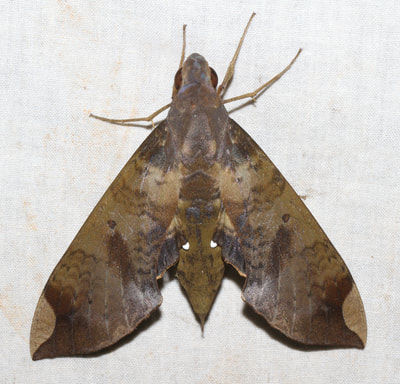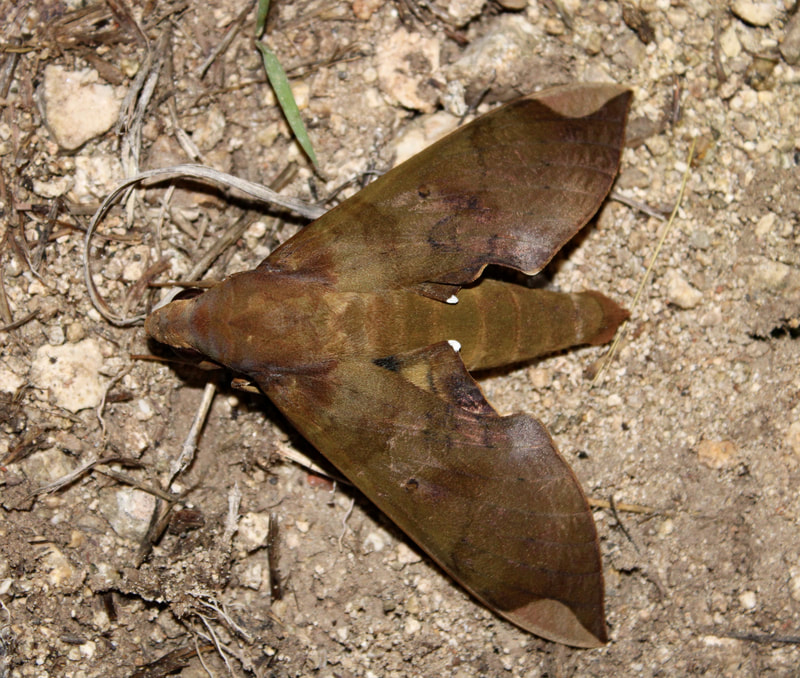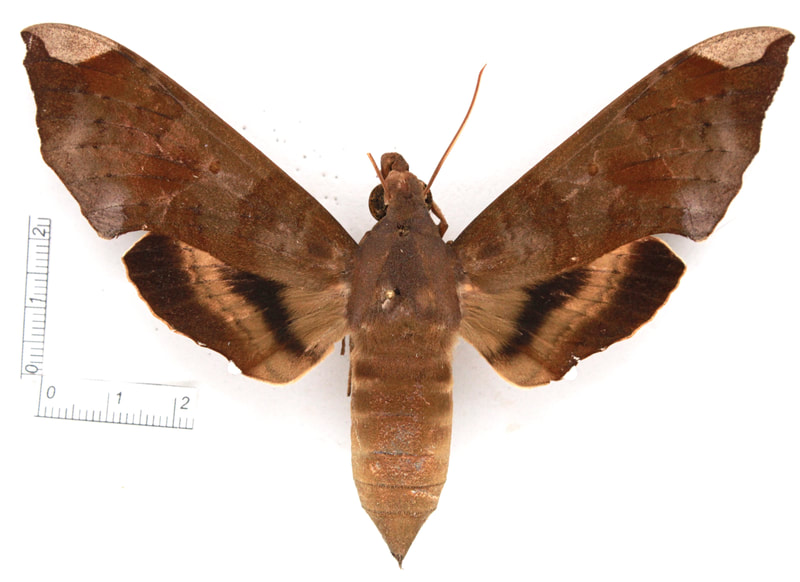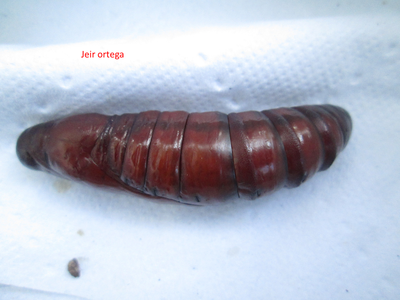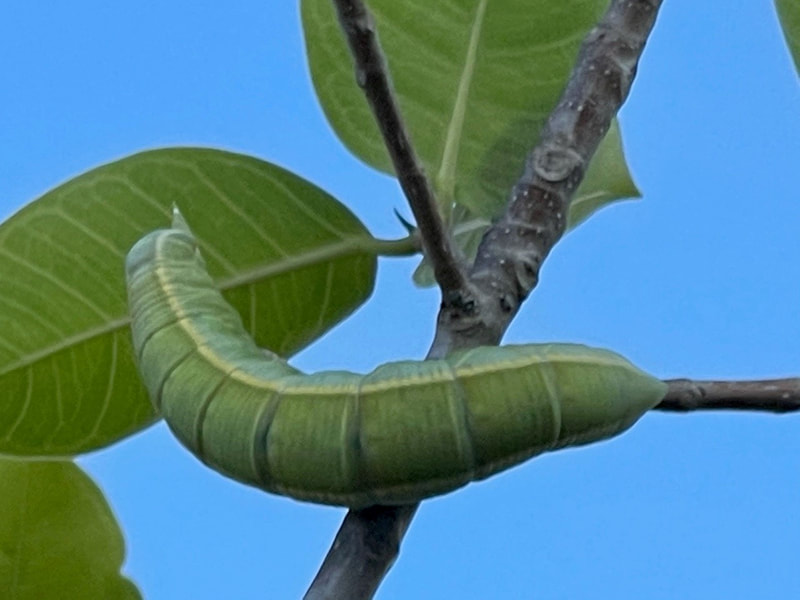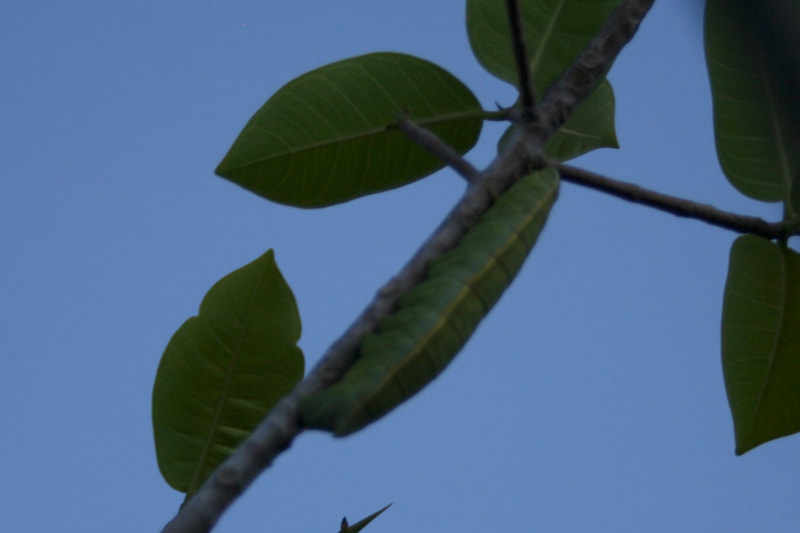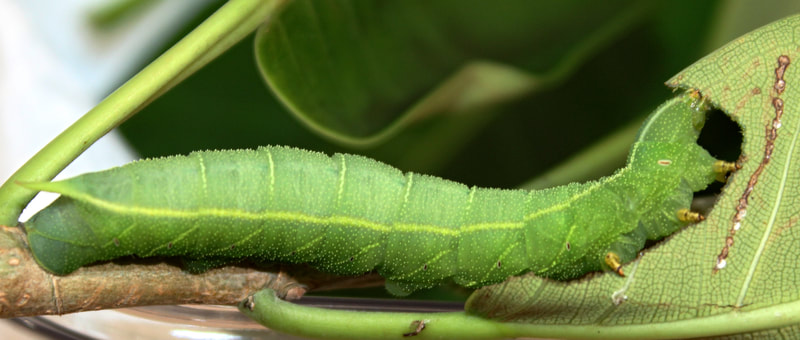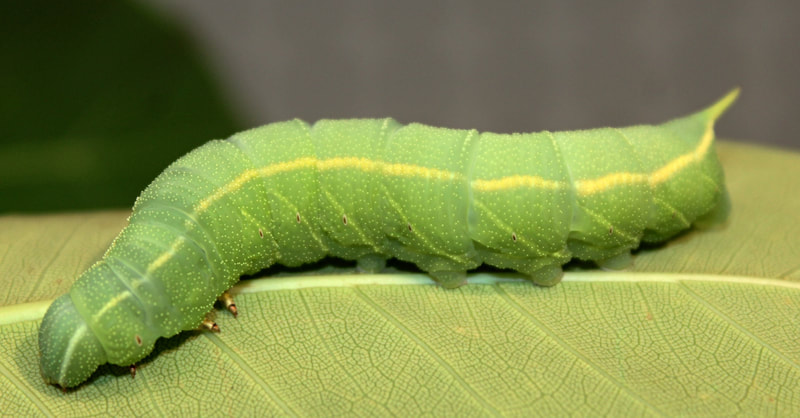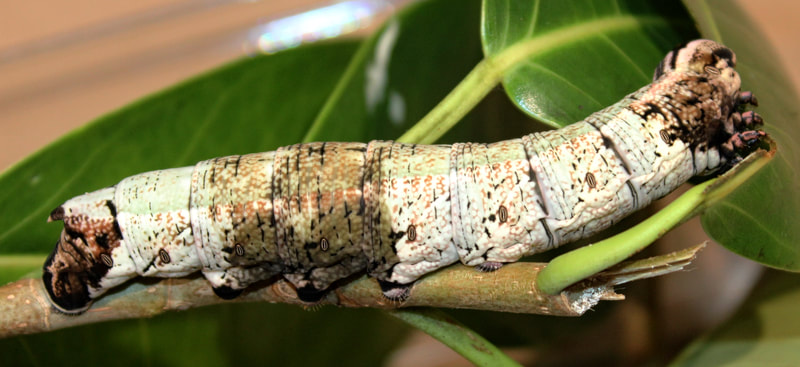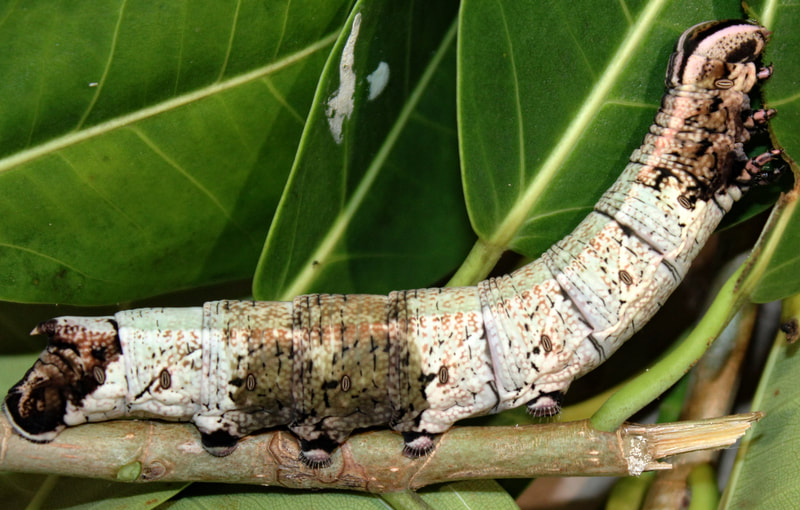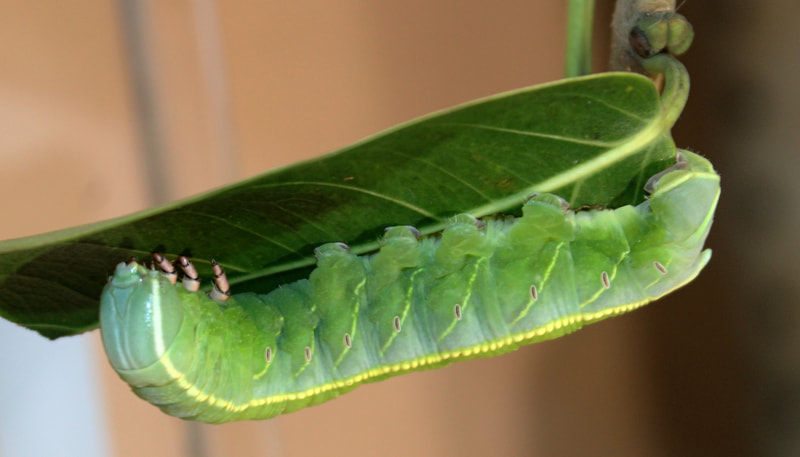|
Common Name(s): Fig Sphinx
Ecology and Life History: This moth is active year-round in South Florida. It is occasionally also found in South Texas, where it is present throughout the warm season. This species will come to artificial lights, including those on stores. It is not often seen in large numbers in the USA. Bait is not likely to be an effective method of attracting this species. Males and females are identically marked, with females being larger and more rotund than males. Eggs are laid on the leaves of Ficus trees. Larvae feed singly, likely on the undersides of the leaves. Older larvae hide by sitting on the stems of ficus, they resemble a broken branch. This larva turns a spectacular teal color with a bright orange dorsal surface when it is ready to pupate, at this stage, it is extremely recognizable. Habitat and Searching for Larvae: This species feeds on Ficus species, particularly younger trees with new growth. Larger trees are also acceptable, but the newer growth is often out of reach. This species can be found virtually anywhere on the tree. Larvae can be out of reach and toward the top of the tree, but can also be found on lower limbs. On younger trees, this species can defoliate the tree with ease. In Florida, this is a species of tropical hammocks, yards, and parks where ample Ficus is planted or growing. Larvae can be found year-round in Florida. It is unknown whether this species glows under UV light. Rearing Notes: {COMING SOON} Host plants: Click here to load this Caspio Cloud Database
Cloud Database by Caspio |
Adult description:
This is a large distinctive sphingid, forewings are 53-68mm in length (1). The overall color of this moth is brown, however fresh specimens and several populations in South Florida have a green color. The apex of the forewings has a light patch, usually olive green in color. There is often assorted black streaking on the forewings, much more noticeable in females, but may be faint in males (1). The hindwings are a nice green color with a black base and a black line in the middle and a bright white spot on the anal angle. There are no similar species in the US when taking into account the large size and coloration of this moth. Larval description: L5: The larva is highly variable. Final instars can either be black and white in color and resemble bark, or they can be green or blue. The horn is greatly reduced, but not fully absent. The green or blue form larvae have two yellow dorsal stripes that run from head to the horn. The dorsal part of the larva in these forms is much darker than the rest of the larvae. There are also white abdominal streaks that bisect the orange spiracles in these forms. The head capsule is blue-green and has two white lines on it. The bark mimic form is much plainer in comparison, having only brown and white splotching. The spiracles are black in this form, and the head capsule is usually brown instead of green-blue and has black lines instead of white. Prepupal larvae are quite striking, the dorsal region turns bright orange and the rest of the larva becomes turquoise. |
The gallery to the left contains photos of Pachylia ficus adults. If you have a photo that you would like to submit to us, please contact us.
The gallery to the right contains photos of Pachylia ficus larval and pupal stages. If you have a photo that you would like to submit to us, please contact us.
The gallery to the right contains photos of Pachylia ficus larval and pupal stages. If you have a photo that you would like to submit to us, please contact us.
|
|

